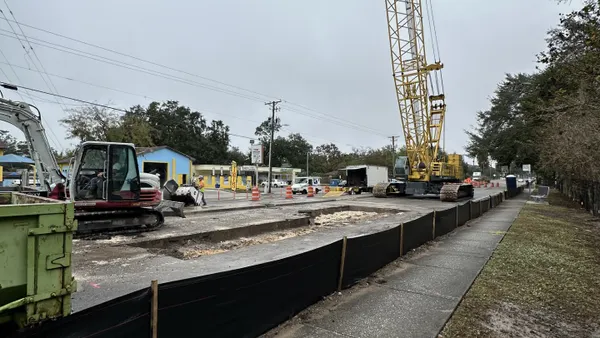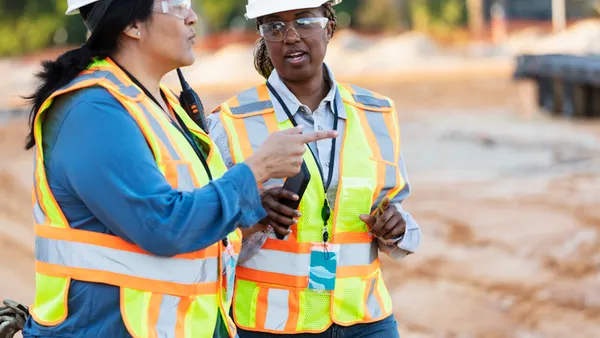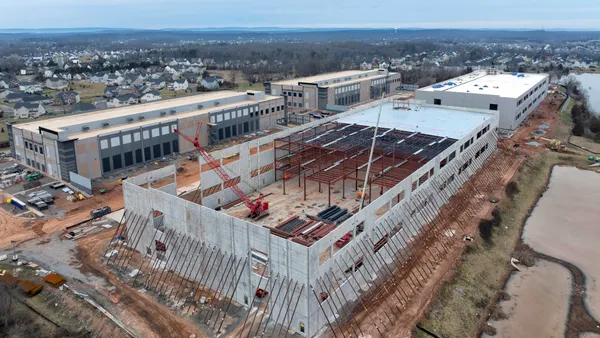Dive Brief:
- According to the latest American Society of Civil Engineers report card, the percentage of structurally deficient U.S. bridges dropped from 12.1% in the society's 2009 report card to 9.1% in its most recent update in 2017.
- In the society's 2009 report, the average age of U.S. bridges was 43 years old — the same as in the 2017 report — which means many of the structures are still creeping up on the traditional, functional lifespan of 50 years old. The most recent estimate from the society is that almost 40% of bridges were built 50 or more years ago, and 15% were built between 40 and 49 years ago. In the 2009 report, the ASCE said 14.8% of U.S. bridges were functionally obsolete, compared to the 13.6% in the 2017 report, indicating another area of small improvement.
- The ASCE said the traveling public makes 188 million trips across structurally deficient bridges every day, and, though the percentage of structurally deficient bridges has decreased slightly, the additional bridges now approaching the 50-year, useful life mark present additional challenges. The society projected it will take $123 billion to rehabilitate the nation's bridges.
Dive Insight:
A more recent report about the status of U.S. bridges from the American Road & Transportation Builders Association pegs the number of structurally deficient bridges at 9%, which is no surprise since both organizations use data from the U.S. Department of Transportation's National Bridge inventory database. ARTBA's analysis also came to the conclusion that 30% of the country's bridges, including those that are part of the interstate system, need repairs and that, at the current pace of activity, it will take 37 years to make all the necessary improvements, including replacement.
In Mississippi, the structural soundness of the state's bridges was of such concern to officials that, in April, Gov. Phil Bryant ordered the Mississippi DOT to close 83 spans deemed structurally deficient. This was in addition to 19 that were already shut down.
Certainly, no one would advocate for leaving structurally deficient or functionally obsolete bridges as they are, but the discussion about how to tackle repairs and replacements usually comes down to money or lack thereof. To that end, Sen. Sherrod Brown (D-Ohio) proposed the $75 billion Bridge Investment Act in January, a measure that would fund a 10-year, competitive federal grant program for state bridge repairs. The proposal won industry support early on and is currently in committee.










